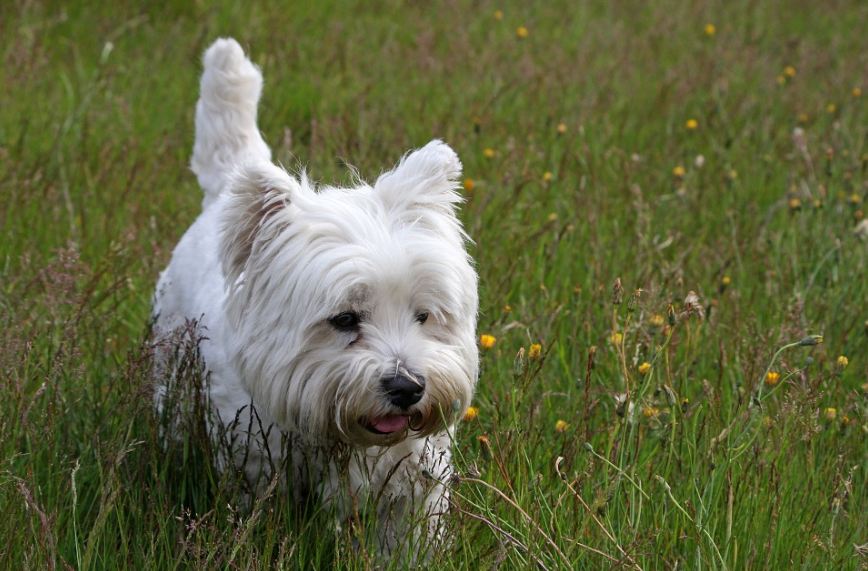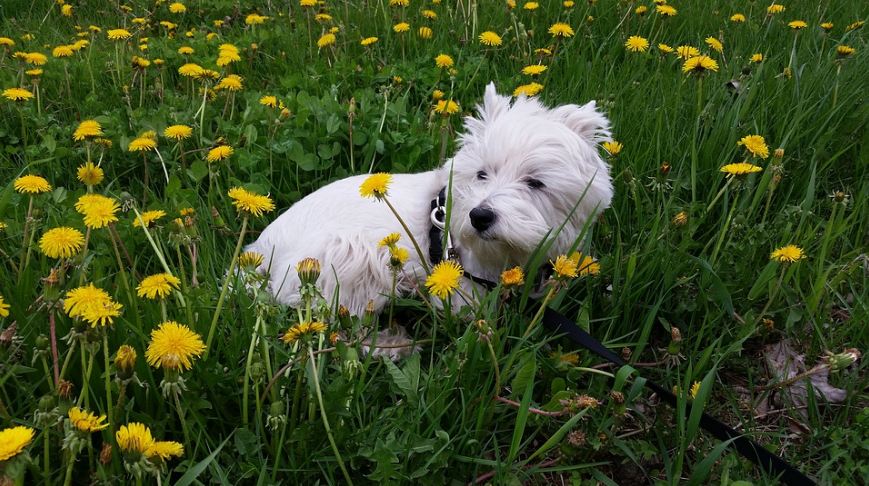Full of self-esteem and liveliness, the West Highland White Terrier has endeared many people for over three centuries. Fondly called the Westie, he is affectionate and intelligent, with slight stubbornness that makes people laugh as he entertains himself. Expect him to bring smiles as he cocks his head to his side and gives a puzzled, comical look. While diminutive, he is a happy and healthy dog that would make a great addition to any home, leading him to be one of the most popular of all the small terriers.
Origins of the West Highland White Terrier
The West Highland White Terrier shares its history with the other terriers of Scotland, the Skye, Scottish, Cairn, and Dandie Dinmont terriers, which are believed to have descended from the same family tree.
The Westie we know today traces its roots in the 1700s when these little terriers were bred by the Malcolm clan to exterminate badgers, fox, otters, and vermins from the Poltalloch estate.
It is then deemed that these Malcolm dogs were given as gifts to King James I, who asked for small earth dog breeds. From nobles to gentries and poor farmers, all faced rodent infestation, making these earthdogs a great solution in eliminating rats.
However, the breed’s color is said to be brought by a tragic event when Colonel Malcolm accidentally shot his wheaten-colored dog, mistaking it for a fox. Since then, he decided to develop white dogs to avoid such devastating mishaps in the future.
In 1896, the breed first appeared in Scottish dog shows and was referred to as Poltalloch Terrier, or the Rosneath Terrier, another estate in Scotland where other early breedings were performed.
In 1906, the Kennel Club of England recognized the breed as West Highland White Terrier instead, referring to the Scotland region in which the breed catapulted to fame. In the same year, the Westies started to show up in AKC shows and has then been a popular companion in many homes.
Characteristics of the West Highland White Terrier
Height: 10-11 inches
Weight: 15-20 pounds
Life Expectancy: 13-15 years
Hypoallergenic: Yes
The West Highland White Terrier is a small, well-balanced, and sturdy looking terrier. He has a strong build, with a straight back but deep in the chest and back ribs. His legs are powerful and muscular, relatively short, but not too low on the ground. The nose is black while the almond-shaped eyes are dark-brown and set wide apart. Meanwhile, triangular ears stand erect on the top of the head. His tail is somewhat short, thicker at base and tapering towards the end. The solid white coat is composed of a straight, hard topcoat and a soft, dense undercoat.
Despite its compact body, the West Highland White Terrier packs a lot of personality. He is an assertive, cheerful, and intelligent dog that finds pleasure even in the simplest things, such as food or a nice belly rub. He also enjoys being a part of the family and gets along with everyone. The Westie’s happy nature allows him to treat all life adventures with glitter of positivity, entertaining many dog fanciers.
Brimming with energy, the Westie also loves to play and run around to anything he sees in motion. He needs to be in a well-fenced area or on a leash if you don’t want him to chase smaller creatures. Also, remember that the Westie is bred to work alone. He is independent, strong-willed, and somewhat stubborn. Training can be a challenge for him, but thanks to his smarts, he will do well if treated with patience and engaged in exciting and upbeat sessions.
Caring for the West Highland White Terrier
The West Highland White Terrier’s coat is easy to groom. Regular brushing and trimming can suffice in keeping it healthy. Trimming is usually done around the eyes and ears and on the feet. However, if you intend to have him as a show, stripping may be needed at least twice a year. As the coat stays clean, bathing is rarely necessary. His hard topcoat also means that frequent bathing may do more harm than good. Instead, wipe them down regularly can help keep them tidy and sparkly white.
As an energetic breed, he needs a lot of exercise, probably from a walk or in forms of play. He will also enjoy a fun romp off-lead in a spacious, fenced-in yard. If you have a pool, he might enjoy a good swim. Just supervise him as he is not as good in the water as some of his canine cousins.
In terms of feeding, the West Highland White Terrier daily recommended amount is ½ to 1.5 cups of high-quality dog food each day, divided into two meals. However, like people, dogs vary. So it is best to consult a veterinarian that would help develop a diet plan that fits the dog’s age, size, metabolism, and activity level.
In general, Westie is a healthy breed. Reputable breeders now take responsibility and screen their pups for health conditions, such as patellar luxation and heart diseases. Still, regular consultations with the vet for checkups, vaccinations, and flea control can help get your Westie a long, healthy life.


